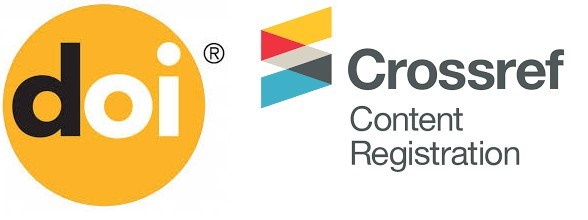Penggunaan Media Kahoot! Sebagai Media Pembelajaran Maharah Kitabah (imla’) Bahasa Arab di Era Industri 4.0
(Studi Kasus di Kelas 1 Diniah Pondok Nurul Huda Salafiah Safi’iah Malang)
DOI:
https://doi.org/10.32699/liar.v4i2.1256Keywords:
Media Kahoot, Arabic Writing skills, Era Industri 4.0Abstract
Writing is one of the most recent language skills that must be mastered by learners. Writing in Arabic includes understanding how to write words consisting of a series of hijaiyyah letters. writing skills for grade 1 diniah are still often found in santri making mistakes in writing hamzah qotho and washol. Santri are still confused about the difference between hamzah washol and qotho ', and students are still mistaken which is hamzah washol and qotho'. If seen, Santri likes in the game.. In Pondok Nurul Huda Salafiah Safi'iyah is a salaf lodge where students allow to bring cellphones and laptops, this cottage is technology-based, and this cottage has provided wifi for internet nets so to overcome these problems, researchers use the application kahoot. The purpose of this study was to determine the benefits of kahoot media for students in writing skills lessons (Imla ') at Pondok Nurul Huda Salafiah Safi'iyah Malang, and to find out the concepts or steps of teachers using kahoot in writing skills lessons (Imla') in Pondok Nurul Huda Salafiah Safi'iyah Malang.
References
Dendy Sugono dkk. 2008. Kamus Besar Bahasa Indonesia. Jakarta: Pusat Bahasa Departemen Pendidikan Nasional.
Saefuloh. 2012. Teknik Pembelajaran Keterampilan Bahasa Arab. Cirebon : CV Pangger,
Kunandar,. 2011. Langkah Mudah Penelitian Tindakan Kelas sebagai Pengembangan Profesi Guru. Jakarta : PT. Raja Grafindo Persada.
Fitriyanisa. 2019. dalam jurnal seminar nasional Bahasa Arab, “Media Pembelajaran Kahoot dalam Pembelajaran Bahasa Arab,
Maulidina, Yulia. 2018. Skripsi : “Penerapan Media Kahoot dalam Pembelajaran Kerampilan Mendengar”
Aprilia riyan dan Ali Muhammad. 2019. Dalam jurnal prosiding Nasional “ Implementasi Kahoot sebagai Media Pembelajaran Berbasis Digital Game Based Learning dalam Menghadapi Revolusi Industri 4.0.
Ayu Rahayu dan Dinar Westri Andini.2019. dalam jurnal “Media Pembelajaran Ramah Lingkungan bagi Guru Sekolah Dasar Inklusif di Era Revolusi Industri 4.0”
Kurnia Martikasari.2018.dalam Prosiding Seminar Nasional FKIP “Kahoot :Media Pembelajaran Interaktif dalam Era Revolusi 4.0”.
Noza, Asri, dan Eka. 2020. Dalam jurnalnya, “Pemanfaatan Aplikasi Kahoot untuk Meningkatkan Penguasaan Unsur Bahasa Arab.
Dewi Fitriyani. 2013. Skripsi : “Efektifitas Media E-Leraning terhadap Keterampilan Menulis Bahasa Arab Kelas XI Bahasa Sma Islan Sudirman Ambrawa.
Nur Hafidhotul , dan Meini Sondang. 2019. Dalam jurnalnya “Pengaruh Media Kahoot dan Motivasi Belajar Terhadap Hasil Belajar Siswa”. Volume 03 Nomor 01.
John W. Creswell. 1994. Research Design: Qualitative and Quantitative Approaches .California:SAGE Publications, Inc.
Koentjaraningrat. 1991. Metode-Metode Penelitian Masyarakat. Jakarta: Penerbit PT. Gramedia).
Sugioyono. 2016. Metode Pennelitian Kuantitatif, Kualitatif, dan R&D. Bandung, Al-Fabeta.
Abdul Aziz , Syamsu Nahar, Mardianto. 2017. Dalam jurnalnya “Desain Pembelajaran Imla’ dalam Meningkatkan Kemampuan Menulis Tulisan Arab Bagi Santri di Pondok Pesantren Ar-Raudlatul Hasanah Medan”, Vol 1 No 4.
Downloads
Published
Issue
Section
License
Authors who publish with this journal agree to the following terms:
a. Authors retain copyright and grant the journal right of first publication with the work simultaneously licensed under a Creative Commons Attribution-ShareAlike 4.0 International License. that allows others to share the work with an acknowledgement of the work's authorship and initial publication in this journal.
b. Authors are able to enter into separate, additional contractual arrangements for the non-exclusive distribution of the journal's published version of the work (e.g., post it to an institutional repository or publish it in a book), with an acknowledgement of its initial publication in this journal.
c. Authors are permitted and encouraged to post their work online (e.g., in institutional repositories or on their website) prior to and during the submission process, as it can lead to productive exchanges, as well as earlier and greater citation of published work (See The Effect of Open Access).












